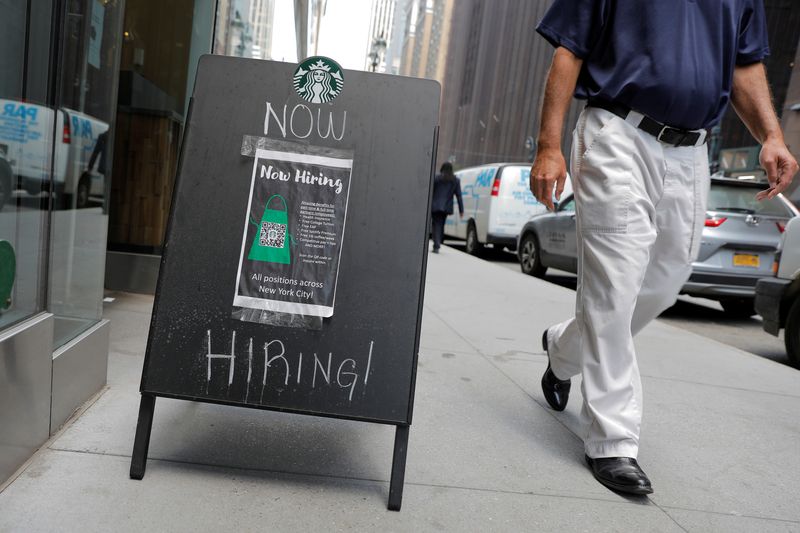By Geoffrey Smith
Investing.com -- U.S. businesses kept hiring at a decent clip in September, despite signs of the broader job market cooling down over the summer, fresh data showed on Wednesday.
Payrolls processor ADP said that private-sector employment rose by 208,000 in the month through mid-September, a little above expectations for growth of 200,000. ADP also revised up its number for August by some 50,000 to 185,000.
The numbers were a sharp contrast to August's Job Openings survey from the Labor Department that was published on Tuesday, which showed one of the biggest ever monthly drops in job vacancies.
"There are signs that people are returning to the labor market," said ADP chief economist Nela Richardson. "We're in an interim period where we're going to continue to see steady job gains. Employer demand remains robust and the supply of workers is improving - for now."
ADP's report comes two days before the government releases official data for the whole U.S. labor market in September.
The services sector accounted for all of the net growth in jobs in the month - and then some. Services employment rose 237,000, while manufacturing employment fell by 29,000, ADP said. But that drop in manufacturing jobs, along with signs that job quitters aren't getting quite as much of a pay raise when moving to new jobs, were the only signs of any real slowdown in the report.
There were clearer signs of a slowdown in other economic data released on Wednesday. Specifically, mortgage applications fell a whopping 14% on the week - their biggest weekly drop since the early days of the pandemic - as borrowing costs continued to surge to fresh highs. The Mortgage Bankers Association's benchmark 30-year rate rose another 23 basis points last week to a 20-year high of 6.75%.
The housing market, like the job market, is a sector of the economy that the Federal Reserve has targeted with a series of aggressive interest rate hikes that have raised the fed funds rate to 3%-3.25% this year. However, while the housing market has cooled off sharply in recent months, the Fed is finding it harder to stop the job market's momentum.
The slowdown in manufacturing recorded by ADP was also corroborated on Wednesday by data showing that imports fell for the fourth month out of the last five in August, further narrowing the U.S.'s trade deficit. Fiscal and monetary stimulus programs had driven a surge in imports during the pandemic, with a tight shipping market also contributing much to the inflation dynamic of the last year. However, that market has cooled off significantly over the last half-year.
"Today's trade data are another confirmation of a softening global economic backdrop as demand weakens and businesses pull back on investment," said Oxford Economics' Matthew Martin in a note to clients.
Elsewhere, the World Trade Organization cut its forecast for growth in global trade and gross domestic product next year. It now sees trade - a key driver of world economic growth - expanding by only 1% next year, down from a forecast of 3.4% in April. As a result, it cut its world growth forecast for 2023 to 2.3% from 3.3%.
